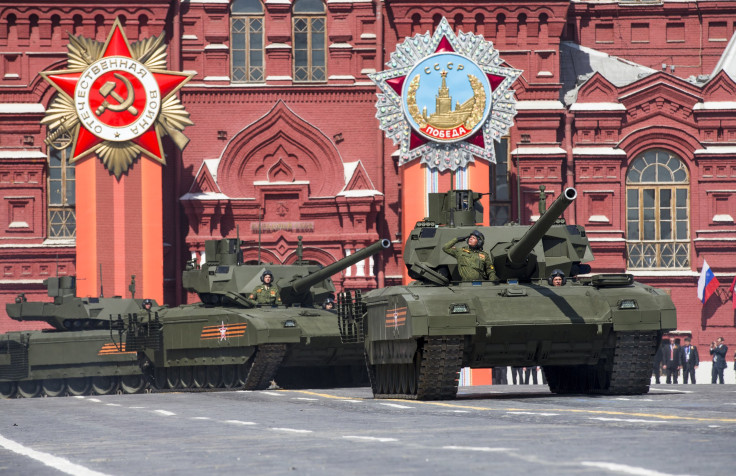Is Russia Developing Hollywood-Style Death Ray Tanks? Kremlin Engineers Revisiting Soviet-Era Plans

Russia could revisit its Soviet-era technology to develop new laser tanks, Russian media reported this week. Though Russia was able to produce a small fleet of prototype laser tanks in the early 90s, the undertaking never reached its full potential because of the Soviet collapse.
Russian engineers may have already begun discreetly tinkering with pre-existing Soviet-era tank plans and laser technology to build more modern similar weapons “without advertising it,” Russia’s state-run Rossiyskaya Gazeta newspaper wrote in a May article titled “Death Rays: When Will A ‘Laser Tank’ Appear in the Russian Army?”
Following the Soviet collapse, economic funding for the tank program and development depleted and the program was killed, Russia’s Sputnik News explained. However, the post-Cold War government under then-President Boris Yeltsin revealed that platforms were essentially ready to be developed from where previous engineers left off, OE Watch, a Foreign Military Studies Office publication, reported.
#ScienceFiction comes true: Russia gives #Soviet-era laser tank new life http://t.co/Ial7TUeHRh #military pic.twitter.com/QKiNdVtLrg
— Sputnik (@SputnikInt) July 16, 2015“Today the laser tanks have been disassembled and are rusting in some bays,” the Kremlin newspaper Rossiyskaya Gazeta wrote. “Meanwhile, the technology has not been lost.”
Russia's previously developed laser tanks were initially designed as a way to counter American and Western European optics and spy satellites, with their first prototype built in 1982, Sputnik reported. One of its tanks, the 1K11, was given the nickname “Stilet” or “Stiletto” and was reportedly capable of burning out enemy cameras, scopes and seekers. The Kremlin also developed the 1K17 tank, which allegedly had a multi-channel laser, placed on a T-80 tank chassis, and allowed the vehicle to rapid fire “shoot” at targets.
For a long-time, Russia's laser tanks had only been seen in Hollywood films. That may no longer be the case, as Western experts have reluctantly said that manufacturing updated laser tanks was technically possible but would require serious investment.
“There are a handful of areas … where, theoretically, Soviet-era engineering remains competitive on today’s battlefield,” retired U.S. Army Maj. Ray Finch, a current analyst at the Army’s Foreign Military Studies Office wrote in OE Watch. "Yet merely harkening back to (and exaggerating) the glory days of Soviet weapon design -- without the requisite investment in the country's technological infrastructure -- will not produce the next wonder-weapon."
© Copyright IBTimes 2024. All rights reserved.






















